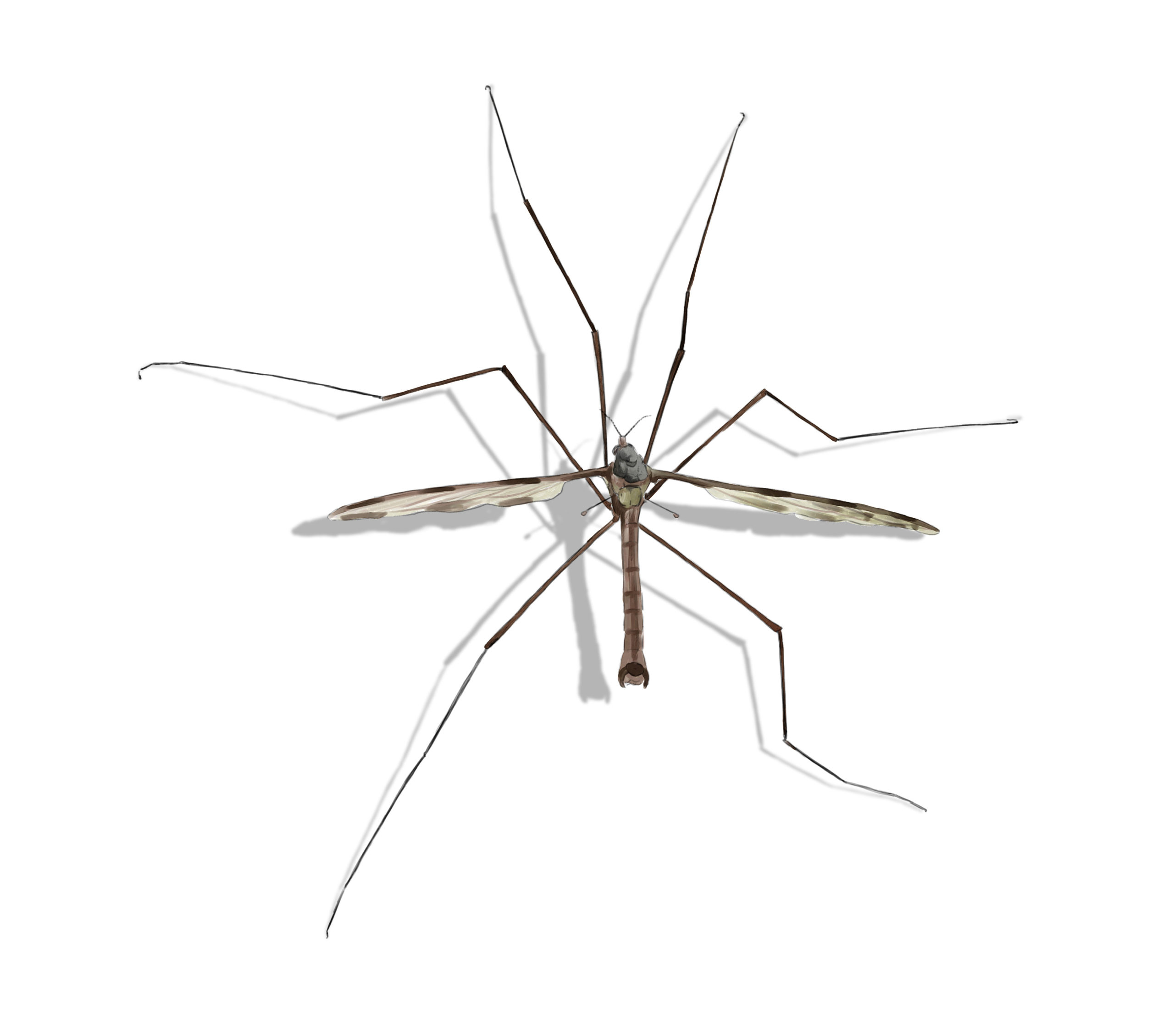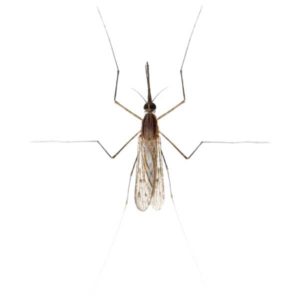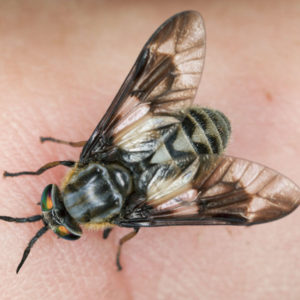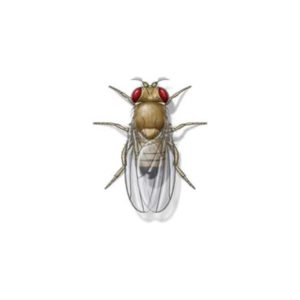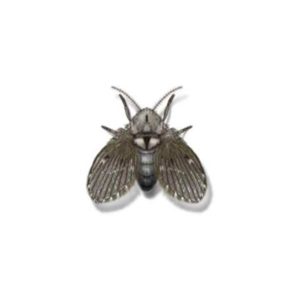Crane flies are found all around the world in temperate or tropical climates and are often confused with mosquitoes, as they look like super-sized versions of those blood-sucking insects. Although their long bodies and thin legs resemble giant mosquitoes, crane flies do not bite people. In fact, they are sometimes called mosquito hawks or mosquito wasps, even though they don’t prey on mosquitoes. The larvae of this species can be damaging to turf and lawns as they feed on the roots, crowns, and above-ground portions of grass plants. Unsure on the type of fly you are dealing with? Take a look at our fly identification page to learn more about some of the most common flies found in North Carolina.
Crane Fly Identification
What Do Crane Flies Look Like?
Crane flies feature long, slender legs that can easily break off, a distinctive trait that often leads to them being found with missing limbs. Their bodies are elongated, and though they bear a superficial resemblance to mosquitoes, crane flies are generally much larger, with some species reaching up to 2.5 inches in wingspan. Their wings are transparent or slightly cloudy, with visible veins running throughout.
Signs of a Crane Fly Infestation
While crane flies are solitary in nature, signs of an infestation typically include an unusual abundance of adult flies around homes and gardens, especially near sources of light during the evening. Another indicator is the presence of their larvae, known as leatherjackets, which are grayish-brown grubs found beneath the soil surface. These larvae can sometimes be seen on the soil surface after rain or during watering.
Habitat, Diet, Life Cycle & Bites
Where Do Crane Flies Live?
Crane flies can be found in lawns, turf, compost piles, and in moist soil around ponds, wetlands, grasslands and streams. Adult crane flies emerge from the soil beneath turfgrass and other grassy areas in late summer and fall. Females lay eggs that hatch into small, brown, wormlike larvae commonly referred to as “leatherjackets”. The leatherjackets feed on the roots and crowns of clover and grass plants during the fall and then spend the winter as larvae in the soil. Around mid-May, they enter a nonfeeding pupal stage and remain just below the soil surface. In late summer, pupae wriggle to the surface and emerge as adults. Their larvae thrive in moist soil, making overwatered lawns and garden beds ideal for their development.
Diet of a Crane Fly
The diet of crane fly larvae includes decaying plant matter, roots, and other organic material found in the soil. This feeding behavior can harm the root systems of lawns and young plants, potentially leading to yellow patches in grass and weakened garden plants. Adult crane flies, in contrast, are not known to feed significantly during their short lifespan, which often lasts only a few days.
Life Cycle of a Crane Fly
The life cycle of crane flies is intriguing. After mating, female crane flies lay their eggs in soft, moist soil. The eggs hatch into larvae, which will feed and grow throughout the fall and winter. As temperatures rise in the spring, larvae mature into pupae before emerging as adult crane flies. This cycle, from egg to adult, can occur once or twice a year depending on the climate, leading to varying population sizes.
Crane Fly Bites
Adult crane flies do not bite or spread diseases, in reality, crane flies do not possess the mouthparts necessary for biting, and they pose no threat to humans or pets in this regard, although crane flies in lawn grass can be problematic.
Are Crane Flies Dangerous?
Despite the damage their larvae can cause to lawns and gardens, crane flies are not considered dangerous. They do not transmit diseases, and their adult form is primarily a nuisance rather than a threat. Crane fly larvae feed on crowns and grass blades on warm nights, damaging lawns and turf. Damage often becomes noticeable in March and April and appears as dying patches of turfgrass. Populations of crane fly larvae have been reduced by as much as 50% during the winter months and between March and May as a result of predators such as birds and ground beetles and other natural causes.
How to Get Rid of Crane Flies?
Effective management of crane flies involves addressing both the larval and adult stages of their lifecycle.
- Cultural Controls: Maintaining a well-drained and properly aerated lawn can discourage female crane flies from laying eggs. Reducing watering can also make the environment less hospitable for larvae.
- Natural Predators: Encouraging birds and beneficial insects that feed on crane fly larvae can help control their population naturally.
- Insecticides: When natural methods are insufficient, targeted insecticides can be applied to infested areas. It is best to consult with a professional fly exterminator to ensure the safe use of these products.
Crane Fly Prevention Tips
Preventing crane flies from becoming a problem is often easier than dealing with an infestation.
- Lawn Care: Regular lawn maintenance, including dethatching and aeration, can reduce the suitability of the area for crane fly larvae.
- Water Management: Overwatering creates ideal conditions for crane fly breeding. Adjust watering schedules to avoid excessive moisture in lawns and gardens.
- Monitoring: Early detection of leatherjackets in the soil can allow for timely intervention before damage becomes significant. If you spot these leatherjackets, contact your local Bug Out experts to come and investigate!
Need help with Crane Flies control?
FAQs
What Do Crane Flies Turn Into?
Crane flies undergo complete metamorphosis, transitioning from eggs to larvae (leatherjackets), then to pupae, and finally to adults. Each stage plays a different role in the ecosystem.
What Causes a Lot of Crane Flies?
A combination of favorable breeding conditions, such as moist soil and abundant organic material for larvae to feed on, can lead to high populations of crane flies. Changes in weather patterns, especially increased rainfall, can also contribute to population spikes.

